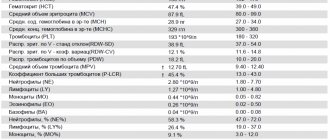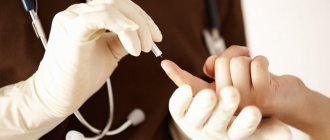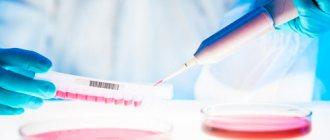Because the symptoms of diabetes can go undetected for significant periods of time, it is called the silent killer. Detection of the disease at an early stage and timely treatment helps prevent numerous severe complications that may be associated with damage to the nervous system, kidneys, eyes, disturbances in the peripheral blood supply, as well as complications during pregnancy.
We should not forget about the prevention of diabetes, which involves, in particular, lifestyle changes. You should stop smoking, do not forget about physical activity, and a balanced healthy diet is necessary. Below are ten key early signs of diabetes that should alert you.
No. 1 Copious, frequent urination
One of the earliest symptoms of diabetes is polyuria.
If you notice frequent urination and a significant increase in urine volume (especially at night), this is a serious signal to contact a general practitioner or endocrinologist.
The amount of glucose in the blood increases due to slower absorption. As a result, the work of the kidneys increases and they “try” to remove excess glucose into the urine. Water, instead of being absorbed by the body, is intensively removed from it.
Signs of the disease
The main symptoms and signs of diabetes are similar for both types of the disease:
- polydipsia - severe thirst;
- polyuria – frequent heavy urination, including at night (nocturia);
- Polyphagia – excessive appetite and constant hunger.
But there are also differences. For example, with type 1 diabetes, patients lose weight (despite a good appetite), and with type 2, they gain weight.
Diabetes mellitus in men is often accompanied by sexual problems: erectile dysfunction, early ejaculation, infertility.
#3 Insatiable hunger
Due to disrupted metabolic processes in the body, a person may constantly experience a feeling of hunger, as the cells stop absorbing glucose, which is “fuel” for the cells.
The body has to look for alternative sources of energy. Moreover, even consuming a large amount of food is not able to satiate a person. He is unable to satisfy his hunger, because overeating further increases the blood sugar level.
In such a situation, a visit to the endocrinologist cannot be postponed.
Treatment methods
Currently, there is no way to eliminate the cause of the disease and completely cure diabetes mellitus. Therefore, diabetics are prescribed symptomatic treatment aimed at getting rid of unpleasant symptoms, maintaining stable glucose levels, normalizing body weight and preventing complications.
For type 1 diabetes mellitus, insulin therapy is prescribed, and for type 2 diabetes, sugar-lowering drugs are prescribed. Moderate physical activity and proper diet are important for successful treatment.
#9 Dry skin and itching
Elevated blood glucose levels provoke dysfunction of the sweat and sebaceous glands. Human skin becomes sensitive and dry. Due to the reduction of the skin's protective barrier, toxins, allergens and infections easily penetrate the skin. In most cases, itching is the result of dry skin or a fungal infection. In some cases, dark spots appear on the skin with diabetes (in the armpits, on the neck and in the groin area).
If you are regularly bothered by burning or itching in various parts of the body, as well as dry skin (despite moisturizing), you need to consult a specialist.
Causes of the disease
The hereditary factor is of primary importance in the development of diabetes mellitus. Predisposition to the disease is transmitted through the maternal line in 5% of cases and through the father in 10% of cases. If both parents have diabetes, the risk of developing pathology reaches 100%.
Also, the main causes of non-insulin-dependent diabetes include:
- inactivity and overeating, leading to obesity - if body weight is 50% higher than normal, then the risk of increased glucose increases to 60%;
- poor nutrition.
The main causes of insulin-dependent diabetes:
- autoimmune diseases (lupus, autoimmune thyroiditis, glomerulonephritis, hepatitis);
- viral infections that destroy pancreatic beta cells responsible for the production of insulin (chickenpox, rubella, hepatitis, mumps).
No. 10 Visual impairment
Is it difficult for you to see details, everything floats before your eyes and you feel like you’re in a fog, have you lost your visual acuity? These symptoms may also signal high blood sugar levels.
If such symptoms are left unattended, over time new blood vessels will appear on the retina and serious problems such as cataracts, glaucoma and retinopathy will arise.
Proper treatment and proper nutrition for diabetes of any type has a positive prognosis; the person remains able to work and does not change his usual lifestyle.
Take care of your health; if you have even one of the listed symptoms, consult a doctor!
Diabetes mellitus: who is at risk
According to WHO, the number of people with diabetes has quadrupled over the past 40 years. What are the risk factors and the first symptoms of diabetes, how serious are the consequences and is it possible to prevent the disease? Endocrinologist Elena Anatolyevna Koroleva spoke about all this on a live broadcast on the website Apteka.ru. Here are the main points of the broadcast.
What is diabetes mellitus and how does it manifest?
Diabetes is a chronic disease that occurs when the pancreas does not produce enough insulin or when the body cannot use the insulin it produces effectively (insulin resistance).
Insulin is a hormone that regulates blood sugar levels. A common result of uncontrolled diabetes is hyperglycemia, or elevated blood levels, which over time leads to severe damage to many body systems, especially nerves and blood vessels.
The normal blood sugar range is from 3.3 to 5.5 mmol/l. If a laboratory test shows a higher blood sugar level, it means that carbohydrate metabolism is disturbed in the body.
Classic symptoms of diabetes: increased thirst, frequent urge to urinate. However, they appear at very high sugar levels (10-15 mmol/l); with moderately high sugar levels (5.5 to 10 mmol/l), symptoms may not appear immediately.
What types of diabetes are distinguished today?
Modern medicine distinguishes three types of diabetes.
For type 1 diabetes
(previously known as insulin-dependent, juvenile or childhood) the cells that produce insulin die in the body. The cause of this type of diabetes is unknown, so it cannot currently be prevented. You can develop type 1 diabetes before the age of 30.
Symptoms: excessive urination, thirst, constant hunger, weight loss, vision changes and fatigue.
These symptoms may appear suddenly.
On the one hand, this is a very severe type of diabetes, the only way to treat it is insulin therapy. On the other hand, this is a fairly rare type of disease - only 10% of people with diabetes suffer from type 1 diabetes.
Type 2 diabetes
(previously called insulin-independent or adult-onset) develops as a result of the body's ineffective use of insulin. Most patients suffer from type 2 diabetes. It is largely the result of excess weight and physical inertia. Most often, people develop type 2 diabetes after age 40. The peak of the disease is 60-70 years.
Symptoms may be similar to those of type 1 diabetes, but are often less severe. As a result, the disease can be diagnosed several years after its onset, after complications have arisen.
Until recently, this type of diabetes was observed only among adults, but in recent years it has also affected children.
is also distinguished .
Gestational diabetes is hyperglycemia that develops or is first detected during pregnancy. Women with this form of diabetes also have an increased risk of complications during pregnancy and childbirth, and they have an increased risk of developing type 2 diabetes later in life.
Most often, gestational diabetes is diagnosed during prenatal screening rather than based on reported symptoms.
It is important to note that this type of diabetes is more dangerous for the baby than for the mother (chronically high sugar can lead to problems during pregnancy and after birth). However, having gestational diabetes during pregnancy increases a woman's chances of developing type 2 diabetes later in life.
Gestational diabetes ends with pregnancy, but it is important to identify and treat it early for the well-being of mother and child.
Prediabetes
Increased glucose tolerance (HTG) and impaired fasting glucose (IFG) are intermediate conditions between normal and diabetes.
People with PTH and IFN are at high risk of developing type 2 diabetes, but this may not happen.
The task of doctors should be to identify and prevent PTG and NGN. For prevention purposes, you should not neglect a medical examination and donate blood for sugar at least once every three years.
Risk factors (type 2 diabetes): obesity, presence of diabetes in relatives, presence of diabetes in a pregnant woman, presence of concomitant hypertension, smoking.
Consequences of diabetes
Over time, diabetes can affect the heart, blood vessels, eyes, kidneys and nerves.
Adults with diabetes have a 2-3 times higher risk of heart attack and stroke.
Combined with decreased blood flow, neuropathy (nerve damage) in the legs increases the likelihood of leg ulcers, infection, and ultimately the need for limb amputation.
Diabetic retinopathy is one of the important causes of blindness. It develops as a result of long-term accumulation of damage to the small blood vessels of the retina. Diabetes may be responsible for 2.6% of global cases of blindness.
In addition, diabetes is among the leading causes of kidney failure.
Is it possible to control the consequences of diabetes if the disease can no longer be prevented?
The severity of the consequences correlates with sugar levels. The most important thing is to control your sugar level and reduce it. The easiest way to do this is at an early stage of the disease.
Prevention recommendations:
- achieve and maintain a healthy body weight
- Be physically active - at least 30 minutes of regular moderate-intensity activity on most days; Additional activity is required to control weight. The minimum prevention of the disease is to try to walk 10,000 steps a day. If your life is spent in front of a computer, you need to start small - take a break from work, walk around the room, use the stairs instead of the elevator, etc. Children and adolescents from 5-17 years old are supposed to get 60 minutes of moderate and high-intensity exercise every day.
- Eat a healthy diet and reduce your intake of sugar and saturated fat
- refrain from using tobacco – smoking increases the risk of developing cardiovascular diseases
Addition to the point about physical activity: women are in a more vulnerable position - due to the greater number of responsibilities (home duties are added to work), it can be very difficult to find time for yourself and for physical activity.
However, it is important to plan ahead and make time for physical activity - women are more likely to develop diabetes.
Modern methods of diagnosing diabetes
The main method remains donating blood for sugar. In addition there are:
- glucose tolerance test
— determination of glycated hemoglobin
- hormonal and genetic studies
— 24-hour glucose monitoring system
— Holter ECG monitoring
Modern methods of treating diabetes
Type 1 diabetes is treated only with insulin therapy.
Continuous infusion of insulin using insulin pumps is a new method of insulin therapy that delivers insulin continuously in very small doses.
For the treatment of type 2 diabetes:
- adherence to nutritional rules, physical activity
— modern hypoglycemic drugs (tablets/injections)
— physiotherapeutic effects (physical therapy)
- high-tech medical care (pump therapy is also high-tech; this also includes vascular operations)
Do people with diabetes receive support from the government?
Yes. Patients have the right to receive free medications. You can view the list of vital medications on the website of the Ministry of Health (list of vital and essential drugs).
One of the requirements for the patient is to carry out self-monitoring using a glucometer (hours for measuring sugar are discussed between the patient and the doctor individually - different types of diabetes require different measures).
Do you need a special diet for diabetes?
Diet is required. The most important thing is to give up sweets. It is necessary to eat in such a way as to lose weight, if you are overweight - for this you need to rebuild your diet, you should start by at least reducing the amount of food consumed.
- It is worth limiting foods containing animal fats and carbohydrates. You can eat carbohydrates in moderation: bread, porridge, pasta, fruits, but do not overdo it, otherwise the sugar will rise too much again.
- You need to increase the amount of dietary fiber in your diet - the more vegetables, the better.
- It is not recommended to eat dried fruits; you should limit nuts and seeds - all these are almost pure fatty foods.
- Be careful with meat: if you eat fatty meat every day, you can gain weight. The same thing with fish - limit fatty, high-calorie varieties.
- Sausage is a bad product for a diabetic.
- Milk contains carbohydrates, so the amount should be limited.
- Vegetable oil is better, it is saturated with beneficial acids. But it affects body weight in the same way as cream. So again you have to be careful. The best option is to use olive or flaxseed.
Questions and answers
Q: Is insulin resistance reversible?
A: Insulin resistance is partly genetic. You can reverse it - you need to make efforts to reduce body weight, you need physical activity, exercise.
Q: If I smoke, my blood pressure periodically rises, and I am overweight, how often should I donate blood?
A: Once a year.
Q: What are the normal blood sugar levels?
A: Blood from a vein – up to 6 mmol/l, from a finger – up to 5.5 mmol/l.
Q: Are the drugs that are given at a discounted rate modern, or is it better to buy them yourself?
A: One of the free drugs is metformin. It is the first-line drug in the treatment of diabetes mellitus around the world. Not the most expensive product, but very effective. On the other hand, today new, innovative drugs have appeared. They do not always work when they should, sometimes they cause side effects, sometimes, on the contrary, additional positive effects. If a doctor recommends buying something extra during a consultation, and you can afford it, it’s better to listen.
Q: How expensive is it to have diabetes?
A: Diabetes is a catastrophic financial burden. Diabetes is expensive, but if treated well, it can cost up to 12,000 rubles a month for just one drug. Consumables (needles, test strips) also cost a lot. Therefore, it is worth focusing on preventing the disease.
Q: Is it possible to measure sugar once every 2-3 days? Every day is very expensive.
A: Depends on how you are being treated. Sometimes they are treated only with diet or medications that do not reduce sugar levels. Then it's better once a day. If the sugar is stable - once a week, maximum - once every two weeks, at least. But if constant self-monitoring is necessary, then it is worth measuring up to several times a day. Sometimes self-control is more important than even the therapy itself.
Recorded by Nina Timonova
Photo deposiphotos.com
The opinion of the author may not coincide with the opinion of the editors
Diagnostics in our clinic
Diagnosis of hyperglycemia includes taking a medical history, analyzing clinical symptoms and a number of laboratory tests. A blood sugar test is taken in the morning on an empty stomach. In some cases, it becomes necessary to repeat the analysis after a few days to exclude possible stress factors.
In modern medicine, several methods of testing blood for sugar are used:
- rapid test for determining the approximate glucose concentration - can be carried out at home, but does not provide one hundred percent accuracy;
- analysis for glycated hemoglobin - allows you to determine the average glucose level over a certain period of time (1-3 months);
- Glucose tolerance test is a comprehensive study that involves taking blood from a finger prick four times over two hours (on an empty stomach and after taking glucose).
In a healthy person, the glucose level is 3.5-5.5 mmol per liter of blood. An indicator of 6 mmol is considered a prediabetic state. If the glucose concentration exceeds this value, the doctor has reason to diagnose diabetes mellitus.
When performing a glucose tolerance test, a result of up to 7.9 mmol/l is considered as normal. Diabetes mellitus is indicated by a value of over 11 mmol per liter.
The Importance of Self-Control
Self-monitoring is regularly self-measuring blood glucose levels and maintaining this level as close as possible to those determined by the doctor. Regular self-monitoring reduces the risk of complications. Glucose level tests are divided into urgent (performed at any time when there is a change in health) and routine (performed daily at a certain time).
Self-monitoring is recommended to be carried out at different times: on an empty stomach, before meals and 1.5 hours after it, before bedtime, before and after physical activity, in case of acute diseases and suspected low glucose levels 8. For the purpose of self-monitoring of glucose, it is recommended to use individual glucometers with setting the target range 5. The frequency of self-monitoring can be determined by the attending physician.
Consequences and complications
Due to the use of an excessive dose of hypoglycemic drugs, excessive physical activity, and during prolonged fasting, a state of hypoglycemia develops - low blood glucose levels. Symptoms: palpitations, trembling, extreme hunger, sweating, dizziness and loss of consciousness. It is necessary to urgently increase the glucose level, because with its prolonged deficiency, loss of consciousness or even a hypoglycemic coma can develop.
Elevated glucose levels over a long period of time disrupt the structure of small and large vessels. Small vessel lesions most often occur in the kidneys and retina. Pathological changes in large vessels can cause heart attacks, strokes, and the formation of long-term non-healing ulcers, which can lead to loss of limbs 5.











